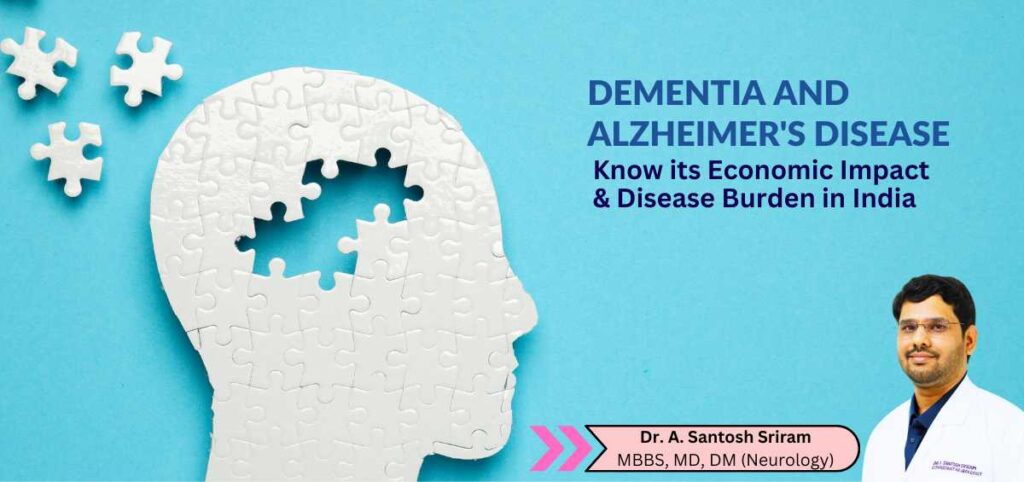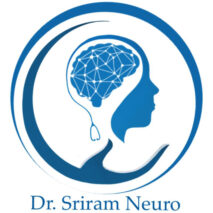
The Economic Impact and Disease Burden of Dementia and Alzheimer’s Disease in India
This article explores the rising prevalence of Alzheimer’s disease (AD) and dementia in India, emphasizing the growing social, psychological, and economic burden these conditions place on individuals, families, and healthcare systems.
Alzheimer’s disease (AD) and dementia are a growing concern in India, affecting millions of people, particularly those aged 60 and above.
What is Dementia and Alzheimer’s Disease?
Alzheimer’s disease is a specific type of dementia, but it is important to note that not all forms of dementia are Alzheimer’s. While dementia refers to a broad range of cognitive impairments, Alzheimer’s disease is the most common form, accounting for the majority of dementia cases.
Alzheimer’s disease (AD) is one of the most common causes of dementia, which is characterized by a decline in cognitive abilities that affect day-to-day activities. The trigger for Alzheimer’s disease begins with the buildup of proteins in the form of amyloid plaques and neurofibrillary tangles in the brain. Over time, this causes brain cells to degenerate or die.
AD is a progressive and neurodegenerative condition that gradually impacts cognitive functions, behavior, and daily living activities. One of the most significant challenges in understanding AD is that its pathological processes begin decades before any visible clinical symptoms appear. This long preclinical phase makes early detection difficult, and by the time symptoms such as memory loss, confusion, and disorientation are noticeable, the disease has often advanced significantly.
Burden of Alzheimer’s Disease
The prevalence of Alzheimer’s disease is alarmingly high and continues to rise, creating an immense social, psychological, and economic burden on individuals, families, and societies as a whole.
As the global population ages, the number of people living with AD is expected to increase significantly, exacerbating these challenges. For instance, in the United States, it ranks as the sixth-leading cause of death overall and the fifth-leading cause of death among people aged 65 and older. What makes AD particularly alarming is that it is the only top 10 cause of death that cannot be prevented, halted, or cured, which underscores the severity of its impact.
Economic Cost of AD:
The economic toll of Alzheimer’s disease is huge. The Alzheimer’s Association estimated the lifetime cost of caring for an individual with dementia to exceed $390,000 USD in 2022, highlighting the financial strain associated with the disease.
These costs encompass medical expenses, long-term care, and the loss of income due to caregiving responsibilities. The burden is not only felt by families but also by healthcare systems and society at large, making Alzheimer’s disease one of the costliest conditions globally.
Those who suffer from AD often experience a gradual decline in their ability to perform basic activities of daily living, such as dressing, eating, and bathing. This loss of independence places a tremendous emotional and physical strain on both patients and their caregivers. The disease’s progression can lead to increased dependency on others for care, often resulting in profound emotional distress and financial hardships for families and loved ones.
👉 Did you know that up to 90% of first strokes can be prevented through healthy lifestyle choices and screening for modifiable risk factors? Learn more about it here.
Epidemiology in India
A study using nationally representative data collected in India between 2017 and 2020 found that an estimated 7.4% of people aged 60 years and older live with dementia. This translates to approximately 8.8 million individuals.
The study, titled “Prevalence of Dementia in India: National and State Estimates from a Nationwide Study” published in The Journal of the Alzheimer’s Association, found that the prevalence of dementia was higher among females than males, at 9.0% compared to 5.8%. It was also higher in rural areas than in urban areas, with rates of 8.4% in rural areas and 5.3% in urban areas.
Data Analysis of Dementia Prevalence Across Indian States
– The national prevalence of dementia in India is 7.43%. This means that, on average, 7.43% of individuals aged 60 and older across the country are living with dementia.
– The prevalence of dementia varies across different states, with some states showing notably higher or lower rates than the national average.
States with High Prevalence
– Jammu & Kashmir shows the highest prevalence at 11.04%, indicating a significant portion of the elderly population is affected in this state.
– Odisha follows closely with a prevalence of 9.87%.
– West Bengal (9.23%) and Kerala (8.27%) also have high prevalence rates.
– Assam (8.47%) and Telangana (8.27%) show similarly high rates, surpassing the national average.
States with Low Prevalence:
– Delhi has the lowest prevalence at 4.50%, which is considerably below the national average.
– Punjab (5.19%) and Bihar (5.69%) also report relatively low prevalence compared to other states.
States with Moderate Prevalence:
– Himachal Pradesh (8.43%) and Rajasthan (7.30%) show moderate prevalence rates.
– Madhya Pradesh (6.75%) and Maharashtra (7.61%) have prevalence rates close to the national average.
Key Observations:
– Urban vs. Rural Disparities: Some states with higher rural populations (such as Assam, West Bengal, and Odisha) show higher dementia prevalence. This could suggest that environmental, healthcare access, or lifestyle factors contribute to the increased rates in rural areas.
– Geographical Variations: Northern and Southern states such as Jammu & Kashmir, Odisha, Kerala, and Andhra Pradesh consistently report higher prevalence rates compared to states like Delhi and Punjab. This may reflect regional differences in healthcare awareness, lifestyle, and population age structure.
Analysis:
While dementia prevalence is higher in several states compared to the national average, states like Jammu & Kashmir and Odisha stand out with significantly elevated rates. On the other hand, states like Delhi and Punjab report lower prevalence, possibly due to demographic or healthcare-related factors. The variability in dementia prevalence across states highlights the importance of targeted healthcare policies and interventions to address the growing burden of dementia, especially in regions with higher prevalence.
Know more about dementia and Alzheimer’s treatment in Hyderabad from one of the top top neuro physicians in hyderabad. Schedule a consultation with Dr. A. Santosh Sriram for expert guidance.
